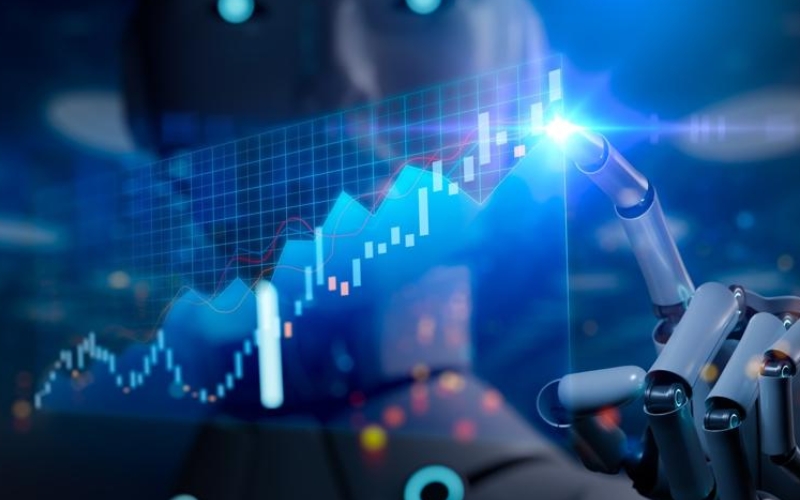The Impact of Interest Rate Hikes most influential economic tools used by central banks to manage inflation and stimulate or cool down an economy. When central banks, such as the Federal Reserve in the U.S. or the European Central Bank (ECB) in Europe, increase interest rates, it has a ripple effect across the financial ecosystem. Consumer banking, in particular, is significantly affected by changes in interest rates, influencing everything from loan affordability to savings yields. In 2025, as interest rates continue to be adjusted globally, understanding the impact on consumer banking becomes crucial for both financial institutions and individuals.
In this article, we will delve into the ways interest rate hikes affect consumer banking, exploring the consequences for consumers, banks, and the broader economy. We will also examine how banking institutions adapt to these changes and what consumers can do to manage the impact of higher rates.
1. How Interest Rate Hikes Work and Why They Happen
The Impact of Interest Rate Hikes, it’s important to understand why interest rates are adjusted in the first place. Central banks raise interest rates primarily to control inflation and cool an overheating economy. When inflation is rising too quickly, central banks increase interest rates to make borrowing more expensive, which in turn reduces consumer spending and slows down economic growth.
Interest rate hikes affect various sectors of the economy, but in consumer banking, the most direct impacts are on borrowing costs, savings returns, and the overall demand for financial products.
2. Impact on Borrowing Costs
The Impact of Interest Rate Hikes effects of interest rate hikes is the increase in borrowing costs for consumers. This has far-reaching implications for various types of loans:
A. Mortgage Rates
Mortgage rates typically rise with interest rate hikes. This increase in mortgage rates can have a significant impact on homebuyers and homeowners looking to refinance.
- Higher Monthly Payments: For those who are taking out new mortgages, higher interest rates mean that monthly payments will be higher, potentially making homeownership less affordable. This can reduce the number of potential buyers, slowing down the housing market.
- Refinancing Becomes Less Attractive: Homeowners looking to refinance existing mortgages may also find that the new higher rates are not favorable. This can discourage refinancing activity, leaving consumers with their higher, pre-rate-hike rates.
- Long-Term Effects on Housing Demand: In the long term, higher interest rates can cause a slowdown in the housing market. With fewer buyers able to afford the higher monthly payments, the demand for housing decreases, which may impact home prices and construction activity.
B. Auto Loans and Personal Loans
Interest rate hikes also lead to higher rates on auto loans, personal loans, and credit cards. As loan rates rise, consumers are likely to experience the following:
- Increased Monthly Loan Payments: For borrowers with existing loans that have variable interest rates, monthly payments will increase as the interest rate adjusts. For new borrowers, the higher interest rates will make taking out a loan more expensive.
- Reduced Consumer Spending: Higher loan payments can reduce disposable income, making consumers less willing or able to take out loans for big-ticket items such as cars or home renovations. This can, in turn, slow down demand in those markets.
C. Credit Card Debt
Interest rate hikes directly affect credit cards with variable interest rates. As the cost of borrowing rises, credit card users will see higher interest charges on their outstanding balances.
- Increased Debt Servicing Costs: For consumers carrying balances on their credit cards, higher interest rates translate into increased costs of servicing the debt. This can strain household budgets and exacerbate financial stress for many individuals.
3. Impact on Savings and Deposits
While higher interest rates are typically viewed as burdensome for borrowers, they can benefit savers. Here’s how interest rate hikes impact consumer savings:
A. Higher Interest Rates on Savings Accounts
As central banks increase interest rates, banks often raise the interest rates on savings accounts, certificates of deposit (CDs), and other deposit products. For consumers, this provides an opportunity to earn more on their savings.
- Improved Returns on Savings: Consumers who keep their money in savings accounts or other fixed-income products can benefit from higher interest rates, increasing their returns. This can encourage individuals to save more, especially if inflation remains high, as it helps preserve purchasing power.
- Increased Demand for Fixed Deposits: With higher interest rates, consumers may shift their focus toward longer-term deposit products such as CDs to lock in higher rates for extended periods, boosting long-term savings.
B. Impact on Investment Strategies
Higher interest rates typically make fixed-income investments more attractive relative to riskier assets such as stocks. As a result, consumers may adjust their investment strategies, favoring bonds, treasury securities, and other low-risk, high-interest products.
- Shift from Stocks to Bonds: Investors may choose to move their funds out of equities and into bonds or money market accounts, where they can earn a guaranteed return. This could result in lower demand for stocks, which may affect the broader equity market.
